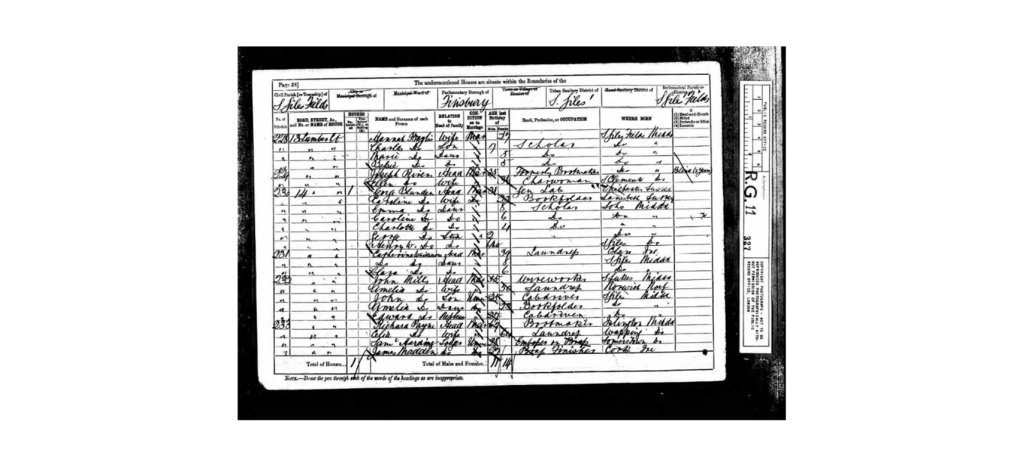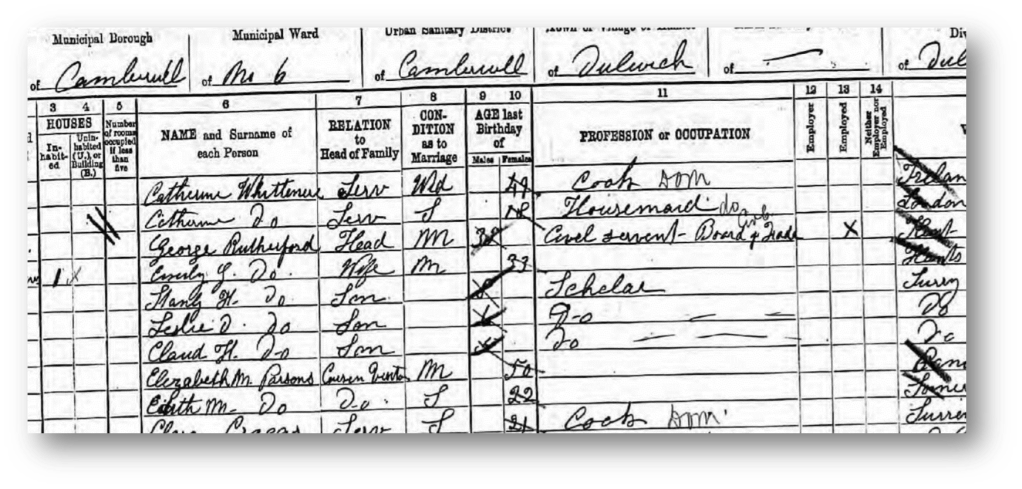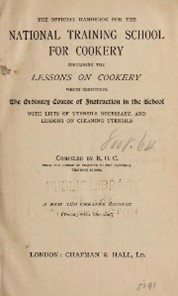September 1899
Day 4 of Malcolm’s diary entries (in green).
Rose later and put on a magnificent Toilette de Dimanche. Went to St Nicholas’s Church for morning service,

sang hymn 215[1] and heard a horrid unclean ecclesiastic preach a horrid sermon and then went to refresh out souls in Knole Park.

Lunch worthy of the costumes of the day, then sat on the balcony. M worked at law, A at clothes.
After tea walked round Knole House and saw a red sunset and heard the Magnificat from outside St Nicholas’s Church which was all lighted up.

In the morning played many patiences and did a 13[2].
Honestly if anyone ever suggests to me again that the younger generation today waste their time playing digital games like Candy Crush, I shall point out that in 1899 there was a clear equivalent.
September 1899 continued
Antonia resumes the writing of her own diary.
We went for a very long lovely walk in Knole Park after tea and saw the weald of Kent.
Claire Whittimore came to me as cook £20.

Clara Whittimore appears in the 1901 census and living with Antonia and Malcolm at 18 Southwick street. She is 26 at that time and from Holborn in London.

In the 1881 census there is a Clara Whittimore, aged 6, living with her mother (who is from County Clare in Ireland), a Launderess, at 14 Lumber Court, St Giles, Finsbury, London which is only a mile from Holborn.
Lumber court was part of Seven Dials. The Seven Dials Conservation Area is one of the most compact and distinctive pieces of townscape in the seventeenth, eighteenth and nineteenth century patchwork that makes up the West End of London.[4]


You can see Lumber Court here in 1894, it is just to the north/west of Seven Dials, near Shaftesbury Avenue.


Lumber Court is coloured black in Charles Booth’s map of 1889 so Clara’s family were probably of the lowest class in Booth’s classification. He calls them ‘semi criminal’ which was doubtless unfair as a descriptor of many of them. It was certainly a terrible slum.
It may be said that Seven Dials, albeit not unrivaled, is from certain points, of view unsurpassed—yes, unsurpassed for rags, dirt, tumult, drunkenness, and squalor—as scandal to great metropolis, and a reproach to , a great Empire. There are few districts in London in which the irony of fate has been so significantly illustrated as in Seven Dials. Daily Telegraph & Courier (London) – Wednesday 10 August 1881
Arthur Trot, detective of the division, stated that the prisoners were members of a gang of thieves in the Seven Dials, formerly known as “The Black Gang,” bat being imprisoned and dispersed, they had been reorganised nnder the nama of ” The Forty Thieves.” The members were nearly all boys, who were trained under old hands too well known to go out. Huddersfield Chronicle – Saturday 29 October 1881

By 1891 Clara’s mother and sister are registered in the census as living in Dulwich, South London in the household of Thomas Mowell, a cutlery and plate manufacturer from Shefield. Clara’s mother, Catherine is described as the cook and her sister, also Catherine, as a housemaid. There is no sign of Clara on this return so perhaps she was already in service elsewhere and gaining experience in a kitchen.
Antonia cannot have expected Clara to be a very accomplished cook at 24 years of age and this lack of training and experience was not uncommon. Newspapers of the time were full of advice on how to train you cook yourself:
How to train your cook – First Lesson. Cooks nowadays are, comparatively speaking, but few, whilst the numbers of mistresses requiring them are ever on the increase.. For the time-being let the bare fact suffice, since it has be faced it is twice difficult to obtain an even moderately good cook to-day as it was even year ago… The remedy, though, a certain extent, lies in the mistresses own hands. Train your cook for yourself, and, if you are careful when selecting your raw material only unqualified success should, in the long run, be yours…Let me advise you to, if possible, choose a country girl, and for this reason: Most of them, even the very ignorant, have some slight idea of cooking to start with. There are no fried fish or ready-cooked ham and beef shops in small villages, and, as a general rule, Hodge likes his Sunday joint properly cooked, and is particular to a degree over the potatoes served with his daily bacon, and the practice in all these things, simple as they are, gives a girl some insight into the first principles of cookery. Yes, but where am I to obtain a country girl?” says the puzzled young housewife. Well, your best and safest plan is to advertise in one or more of the country papers. For instance, Suffolk, Norfolk, Yorkshire, Gloucestershire; most of the girls from these counties make admirable cooks. And now the question arises, How much, or how little, should the cook to be trained actually know when she enters your service? First and foremost, she must be able to roast and boil thoroughly well and to cook vegetables properly, also to produce such simple dishes as beefsteak and kidney pudding, Irish stew, shepherd’s pie, hot-pot, whilst if she can, in addition, make and bake bread, so much the better for you. She should also know how to produce mutton broth and beef tea. That her pastry is likely to be heavy as lead, and of the consistency of a bullet, need not trouble you in the least, since if you follow my advice and the recipes I hope later on to give, both these defects may be easily remedied. Daily Telegraph & Courier (London) – Saturday 08 July 1899


Apart from newspaper articles there was practical help for servants and their employers. The National Training School of Cookery was established in 1873 in South Kensington and then from 1994 opposite the Grosvenor Hotel on Buckingham Palace Road. The cookery taught at the School was at least partly intended to instruct both those intending to work in the households of the middle and upper-classes and the women in these classes who would be their employers….Ingredients were set out at the start, costed to the nearest farthing. For instance, shepherd’s pie was costed in 1875 at 9&1⁄4 old pence…The range of the School’s activities, and the different social classes catered for, is reflected in its revised list of fees of 1921. Most expensive was the Cordon Bleu course at £60. Other courses included: Household Management; Housekeeping; Ladies’ Short Cookery Course; Plain Cookery; Superior Household Cookery; Cook’s Certificates in Plain and High Class Cookery; lessons in needlework, dressmaking, laundry, millinery, tailoring, and ‘Odd Jobs Demonstrations’.[5]
And what became of Clara? Clara did not stay in Antonia’s service for long. She married James Haynes Cooper on 20 September 1903 and moved to South Africa. They were the parents of at least 4 sons and 3 daughters. They emigrated to San Francisco, California in 1940. Clara died on 15 June 1959, in San Francisco at the age of 84, and was buried in Colma, San Mateo, California. The distance from Seven Dials to San Francisco is long and the opportunities to traverse it were small for a working class girl like Clara so I salute her.
[1] In 1899 in Hymns Ancient and Modern number 215 was The Church’s One Foundation:
1 The church’s one foundation
is Jesus Christ, our Lord;
we are a new creation
by water and the Word.
From heav’n he came and taught us
what perfect love can be;
through life and death he sought us,
and rose to set us free.
[2] Good Thirteen is a simple, German patience game for one person, played using a French pack of 52 playing cards. It also goes under the name Thirteens.
[4] Most London estate developments in the late seventeenth and eighteenth century were planned around a square. Seven Dials is unique, however, in having a radiating pattern of seven streets and a central polygonal space. The streets are only forty feet wide and the Sundial Pillar is forty feet high.
Thomas Neale’s original plan, submitted to Sir Christopher Wren as Surveyor General, shows six streets and a church but Neale cheated by adding a street and failing to build the church, thus increasing his land value without providing the social facilities. The Sundial pillar only has six faces – a seventh face would have been impossible. It is highly likely that the stonemason Edward Pierce was a member of the Masons (whose first Lodge was in Covent Garden) and the Sundial Pillar and the whole layout probably relate to the basic precepts of the ‘Craft’ of Masonry. https://www.sevendials.com/history/the-seven-streets-of-seven-dials
[5] Wikipedia.